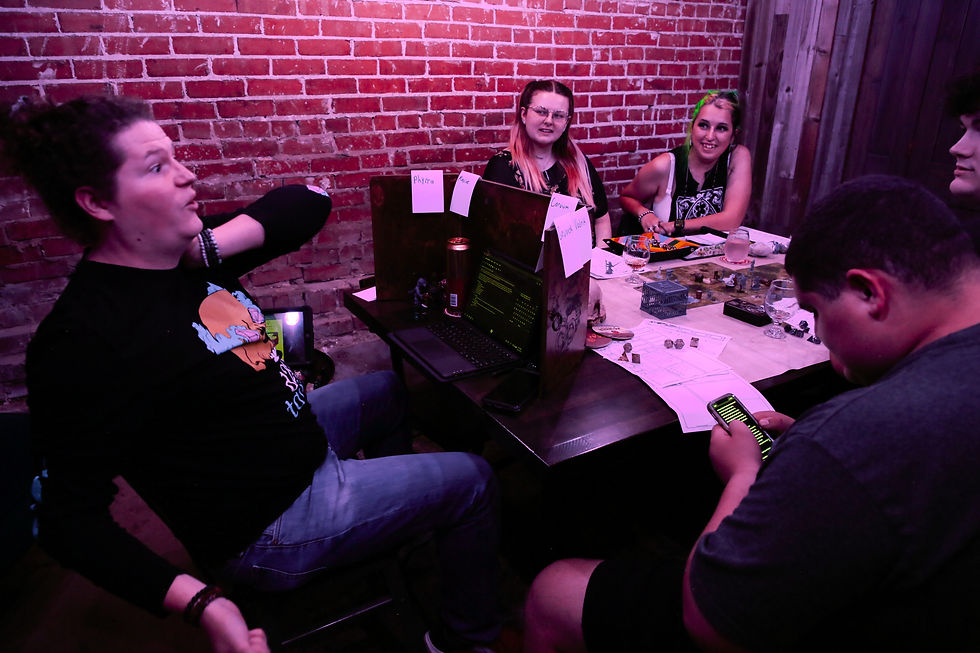Frequently Asked Questions: Tabletop Role-Playing Games (TTRPGs)
- Melissa Strickland
- Sep 30
- 2 min read

Q: What exactly is a tabletop role-playing game (TTRPG)?
A: A TTRPG is a collaborative storytelling game where kids take on characters, work together to solve challenges, and make choices that shape the story. Think of it as “let's play pretend with structure”—part game, part storytelling, part teamwork.
Q: How do TTRPGs help with social skills?
A: Kids practice taking turns, listening, negotiating, and collaborating with others. The game naturally encourages empathy because players step into the perspective of their characters and consider how others might feel or respond.
Q: Can TTRPGs support academic skills?
A: Yes! Kids use math when rolling dice and tracking resources, practice reading and vocabulary when exploring rules or character sheets, and strengthen creative writing skills when developing backstories. Many parents notice improved problem-solving and critical thinking as well.
Q: What about confidence and self-expression?
A: Role-playing lets kids experiment with trying out new ideas and personalities in a safe space. They get to share their creativity and have their contributions valued, which can build confidence, resilience, and a sense of belonging.
Q: Aren’t these games just “pretend play”?
A: Yes—and that’s the point! Pretend play is one of the most powerful tools for learning. TTRPGs provide structured pretend play that grows with kids as they age, offering opportunities for increasingly complex social, emotional, and intellectual development.
Q: How do TTRPGs support emotional growth?
A: Stories often involve challenges, setbacks, and teamwork. Kids learn how to manage frustration when plans don’t go as expected, celebrate successes, and even process big feelings through their characters in a safe, playful way.
Q: Are TTRPGs safe for kids?
A: Absolutely—when facilitated well. Games can be tailored to age, maturity, and comfort level. There are kid-friendly systems (like No Thank You, Evil! or Amazing Tales) designed specifically with children in mind.
Q: My child is shy—will this help or make them uncomfortable?
A: TTRPGs can be especially supportive for shy or anxious kids. Because they’re “playing a character,” kids often feel freer to speak up, take risks, and try out social interactions they might avoid in real life.
Q: How much time does a game take?
A: A session can be as short as 30–60 minutes for younger kids. Older kids may enjoy longer sessions (2–3 hours), but games can be flexible to fit your family’s schedule.
Q: What’s the biggest benefit for kids overall?
A: TTRPGs combine fun with growth: kids get a creative outlet, a safe social environment, and opportunities to build academic and life skills—all while having a blast.


Comments